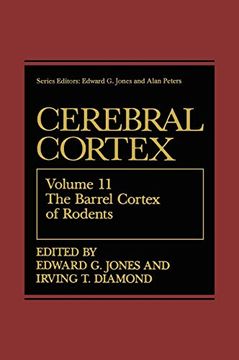Share
The Barrel Cortex of Rodents (Cerebral Cortex) (in English)
Jones, Edward G., Phd (Author)
·
Springer
· Hardcover
The Barrel Cortex of Rodents (Cerebral Cortex) (in English) - Jones, Edward G., Phd
$ 208.41
$ 219.99
You save: $ 11.58
Choose the list to add your product or create one New List
✓ Product added successfully to the Wishlist.
Go to My WishlistsIt will be shipped from our warehouse between
Tuesday, July 16 and
Wednesday, July 17.
You will receive it anywhere in United States between 1 and 3 business days after shipment.
Synopsis "The Barrel Cortex of Rodents (Cerebral Cortex) (in English)"
The barrel area is a unique specialization of the cerebral cortex, shared by many species of rodents and some marsupials, in which the somatotopic map of the body surface receives direct morphological expression. Here, the homogeneous sheet of layer IV granule cells seen in most mammals is fractured into large archipelagos, each representing one of the larger subdivisions of the contra lateral half-body. Within these larger domains are smaller aggregates of granule cells that contain the concentrated terminations of thalamocortical fibers bear ing messages emanating from constellations of receptors located in finer subdi visions of a body part. These smaller aggregates are particularly well-defined in the representation of the face, where they form a one-to-one representation of the sinus hairs or vibrissae and where they have been given the name barrels. The first inklings of the unique structure of the parietal cortex of rodents came in the study of Droogleever-Fortuyn (1914), who remarked on the pres ence in it of clouds of granule cells 0. 5-1 mm in diameter, which he thought were in some way associated with concentrations of nerve fibers. Little attention, however, was paid to his observations. Lorente de N 6 (1922) later observed dense focal concentrations of afferent fiber ramifications in Golgi preparations of the mouse cortex, calling them glomeruli, and these can now be seen as the structures that form the hearts of the barrels and around which the granule cells concentrate.
- 0% (0)
- 0% (0)
- 0% (0)
- 0% (0)
- 0% (0)
All books in our catalog are Original.
The book is written in English.
The binding of this edition is Hardcover.
✓ Producto agregado correctamente al carro, Ir a Pagar.

